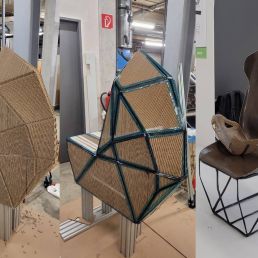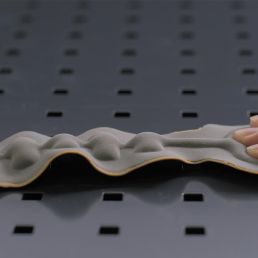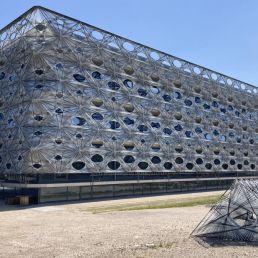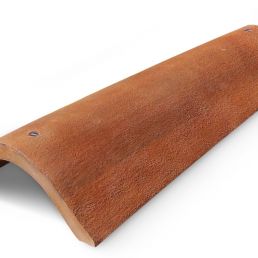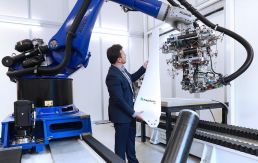
Hydrogen power plant for your own home
Fraunhofer researchers are developing technology using small wind turbines
11 March, 2022
The war in Ukraine speeds up efforts to expand renewable energies and accelerates all activities to promote independence from fossil fuels. A research initiative of the Fraunhofer IAP aims to produce hydrogen by operating small wind turbines for personal use. Small rotors and safe tanks are currently being developed for this purpose.
Hydrogen production in your own garden
According to calculations by the German Environment Agency, private households account for around a quarter of all energy consumption for electricity and heat. Since half of this is still obtained from fossil fuels, a joint project made up of lightweight design experts from the Fraunhofer IAP, the BTU Cottbus and an industrial partner have set themselves the task of developing systems for the use of green hydrogen in private environments.
In detail, this involves the generation of excess electrical energy with small but highly efficient wind turbines for hydrogen production and storage in innovative hydrogen tanks made of fiber composite materials. “The wind turbine will be designed so small that private individuals can place such a system in their garden”, explains Holger Seidlitz. “The hydrogen is then generated on site in a small electrolyser and stored in the tank.”
Hydrogen for fuel cells and vehicles
A fuel cell in the house can then use the hydrogen to generate electricity and heat at the same time. In the future, hydrogen cars could be refueled in your own garage. “The main strength of the concept is that the whole system is small and yet very efficient,” emphasizes Seidlitz.
For this purpose, the lightweight construction experts at Fraunhofer IAP have designed a new propeller that starts moving even with light air currents. “Here in Lusatia, the wind is much weaker than in northern Germany,” says mechanical engineer Marcello Ambrosio, who oversees the project at the Fraunhofer IAP. “We have adapted the design of the rotor blades and reduced their mass by around 30 percent compared to conventional small wind turbines.”
The Fraunhofer IAP recently had an industrial 3D printer that can be used to produce objects up to a size of around 2×2 meters. With this, Marcello Ambrosio and his colleagues recently completed a plastic mold for the production of their low-wind rotors made of fiber composite. They were supported by the company EAB Gebäudetechnik Luckau, which also specializes in lightweight construction.
Fiber composite materials are manufactured by inserting fiber strips precisely into a mold and then curing them into a component with the help of a resin or other plastic. Laying is often done by hand. At the Fraunhofer IAP, however, this task is performed by a modern automated fiber placement system that places the reinforcing fibers precisely in the mold.
Also unique is that the rotor can withstand strong winds. The rotor blades are designed in such a way that they bend elastically and rotate out of the wind during a storm. “In this way, the system throttles the rotation speed on its own and is not damaged,” says Holger Seidlitz. Complicated control technology and complex mechanics can be dispensed with.
Hydrogen tank with safety sensors
The second project also involves lightweight construction technology to produce the hydrogen tank. Conventional hydrogen tanks for industrial applications consist of two pressure-resistant steel vessels. For use in thousands of private households, however, lightweight tanks made of carbon fiber composites would need far less material, be much easier to handle and offer particular advantages, especially for mobile applications.
Since a highly explosive mixture is formed when the hydrogen comes into contact with air, special safety precautions must be taken. The tanks are implemented using carbon fiber strips and wound onto a cylindrical body. Soaked in synthetic resin, these then harden into a tank that can withstand many hundreds of bars of pressure.
In order to detect leaks, the experts also install sensors in the container. “We are currently working with 3D printers that can process electrically conductive inks,” explains Marcello Ambrosio. “We work these directly into the fiber composite.” The researchers can even integrate small electronic components into the tank wall. This early warning system is an important prerequisite for future safe use by the end customer.
image: New types of rotors for weak winds and hydrogen tanks with built-in safety sensors (source: Fraunhofer IAP)
Ecoblaq molecular wood colours
23 March 2024
Ecoblaq is a molecule manipulation method, a natural chemical reaction, making…
Natural fiber reinforced car seat
22 October 2023
The focus of the project "Design for Recycling" is a seat shell that is made…
MotorSkins morphing textiles
19 April 2022
Berlin based start-up MotorSkins designs and produces textiles with embedded…
3D Pioneers Challenge 2022
15 December 2021
The 3D Pioneers Challenge 2022 adresses tech pioneers who pave the way for…
IGNIS – Light from waste heat energy
12 August 2020
The availability of affordable, independent and, above all, clean electrical…
Brake disc with reduced fine dust
21 April 2021
Fine dust endangers our health. One of the main sources is traffic, especially…
Texoversum
15 July 2023
With the "Texoversum", Reutlingen University has put into operation a training…
Invisible Terracotta Solar Rooftile
10 May 2023
The family-run business Dyaqua has developed a technology to integrate a…
Xarvio – Digital Farming
8 January 2021
BASF Digital Farming GmbH has received the renowned Crop Science Award for the…

